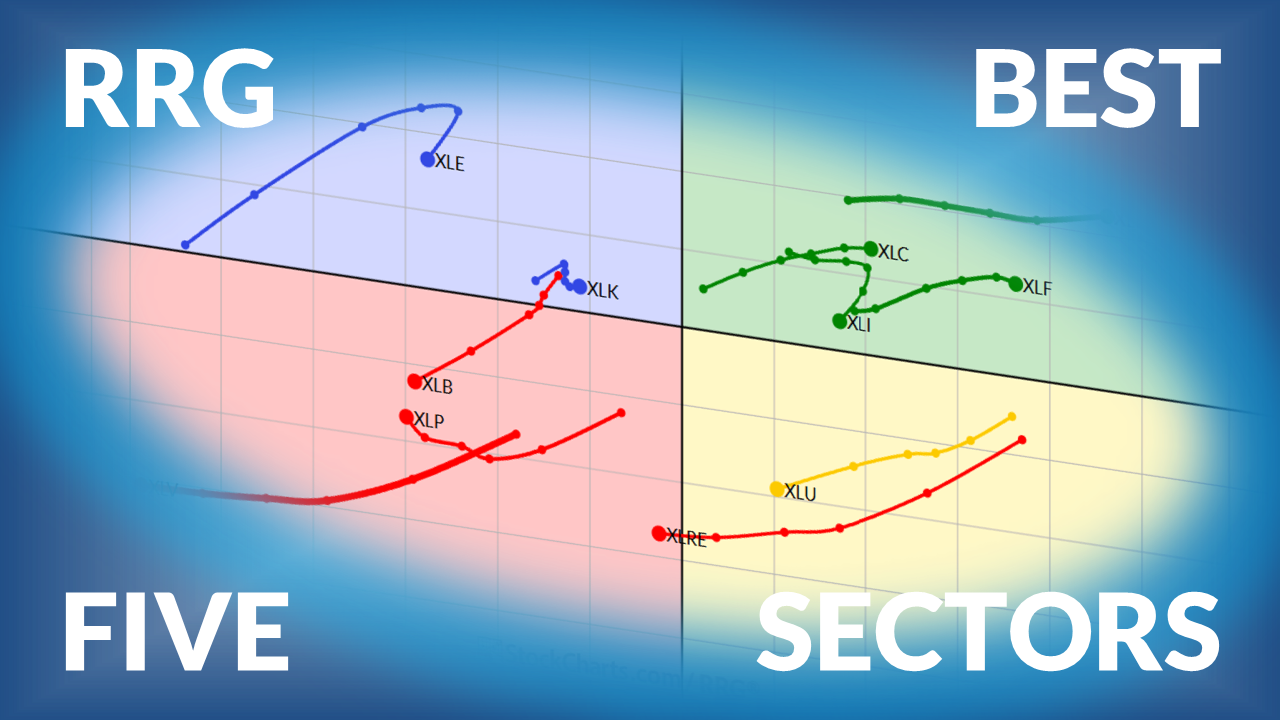FINANCIAL STOCKS LEAD MARKET HIGHER -- OVERSOLD READINGS SUPPORT A RALLY -- BUT THEIR MAJOR TREND IS STILL DOWN -- THE S&P 500 NEARS OVERHEAD RESISTANCE WHILE THE VIX TESTS SUPPORT
FINANCIAL SPDR CLEARS 50-DAY AVERAGE ... After months of poor absolute and relative performance, financial stocks are starting to show some upside leadership. The daily bars in Chart 1 show the Financial Sector SPDR (XLF) gapping higher today and trading above its 50-day moving average (blue circle). That would be enough to turn its short-term trend higher. In addition, its 14-day RSI line (top box) has risen to the highest level in four months, which shows positive short-term momentum. Financials are also starting to show some upside leadership for the first time in a year. The line in the lower box is a relative strength ratio of the XLF divided by the S&P 500. After falling thoughout 2018 as financials underformed the rest of the market, the XLF/SPX ratio bottomed during December and has been climbing since then. Despite its recent improvement, however, the relative strength ratio remains in a downtrend. The XLF itself still has a lot of overhead resistance barriers to overcome to signal a major turn to the upside.
OVERHEAD RESISTANCE: The XLF still remains well below its 200-day moving average (red arrow). In addition, its 50-day average (blue line) is still below its 200-day line. And both moving averages are falling. The XLF would also have to clear the chart lows formed during the first half of the year which should now function as overhead resistance barriers (flat trendline). And the XLF/SPX ratio would have to clear its falling 2018 trendline and exceed its November high. That's a lot to ask for. But today's rally is an encouraging sign and is helping to keep the market's January rebound intact.

Chart 1
WEEKLY XLF CHART SUPPORTS OVERSOLD REBOUND ... The weekly bars in Chart 2 show the Financial SPDR (XLF) still in a downtrend while supporting a rebound from current levels. The XLF fell to the lowest level since the spring of 2017 during December, and remains well below overhead resistance barriers described in Chart 1. Its 14-week RSI line in the upper box, however, touched oversold territory at 30 during December for the first time since the start of 2016 and is rebounding [Correction: The upper line should read "14-week RSI oversold"]. In addition, the XLF has bounced off the 50% Fibonacci retracement line measured from the start of its two-year uptrend in early 2016 to its early 2018 peak. That's more than enough to support a rebound, but not necessarily a bottom. There's more work to be done for that to happen. The weekly MACD lines in the lower box have undercut their early 2016 low, and remain in negative territory. They would have to turn positive and move back over the zero line to turn their trend higher. That's a long way from here. Which is similar to the technical position of the rest of the market. While its January rebound has been enouraging, the market has a long way to go to repair the technical damage done during the fourth quarter.

Chart 2
THE SPX NEARS OVERHEAD RESISTANCE WHILE THE VIX TESTS UNDERLYING SUPPORT... The daily bars in Chart 3 show the S&P 500 nearing overhead resistance at its 50-day moving average (blue arrow) and price resistance starting at its October/November lows. With its 50-day average remaining below its 200-day line (and falling), the chart pictures a short-term rebound within a larger downtrend. The S&P 500 also remains well below its falling trendline drawn over its October/December highs. It would need to clear those barriers to signal the start of another upleg. While the SPX is testing overhead resistance, the Volatility (VIX) Index is testing underlying support. The red line in the lower box shows the VIX peaking during December at overhead resistance formed at last February's closing high. The falling VIX has helped support the current rebound in stocks. The VIX, however, is now nearing potential support near 16 which was formed by two ows hit during November and early December. That's an important test for the VIX and the SPX. As long as VIX support near 16 holds, the market rebound will remain in jeopardy. Any rebound in the VIX from that chart support would be a negative sign for stocks.

Chart 3








